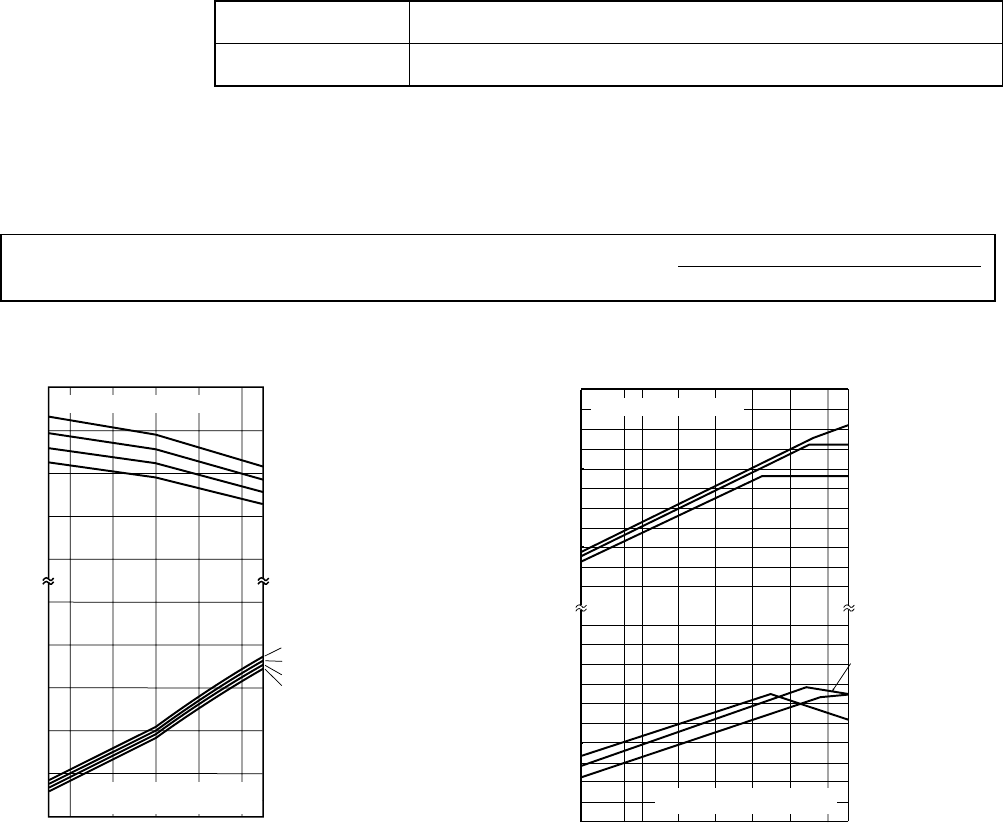
16
5-3. CORRECTING COOLING AND HEATING CAPACITY
5-3-1. Correcting Changes in Air Conditions
(1) The performance curve charts (Figure 1, 2) show the ratio by the temperature condition change when the rated capacity (total
capacity) and the rated input are presumed 1, under standard length (7.6 m [25 ft]) and standard temperature condition.
• Standard conditions:
• Use the rated input and rated power values given in the characteristics table for each indoor unit.
• The input is the single value of the outdoor unit; the input of each indoor unit must be added to obtain the total input.
(2) The capacity of each indoor unit may be obtained by multiplying the total capacity obtained in (1) by the ratio between the
individual capacity at the rated time and the total capacity at the rated time.
individual capacity at the rated time
Individual capacity under stated conditions = total capacity under the stated conditions o
total capacity at the rated time
Rated cooling capacity
Rated heating capacity
Indoor D.B. 26.7°C / W.B. 19.4°C [D.B.80°F / W.B.67°F]
Outdoor D.B. 35°C [D.B.95°F]
Indoor D.B. 21.1°C [D.B.70°F]
Outdoor D.B. 8.3°C / W.B. 6.1°C [D.B.47°F / W.B.43°F]
(3) Capacity correction factor curve
Figure 1. Cooling performance curve
0.4
-5 0 10 20 30 40 46
23 32 50 68 86 104115
0.6
0.8
1.0
1.2
1.4
0.6
0.8
1.0
1.2
1.4
22 (71.6)
20 (68)
18 (64.4)
16 (60.8)
22 (71.6)
20 (68)
18 (64.4)
16 (60.8)
°C DB
°F DB
Cooling capacity (ratio)
Cooling power consumption
(ratio)
INDOOR
INDOOR
OUTDOOR
:WB(°FWB)
:WB(°FWB)
0.6
0.4
0.8
1.0
1.2
1.4
0.4
0.6
0.8
1.0
1.2
1.4
-12
10
-18
0
-10
14
-5
23
0
32
5
41
10
50
15
59
°C WB
°F WB
21.1 (70)
25 (77)
15 (59)
21.1 (70)
25 (77)
15 (59)
Heating power consumption
(ratio)
Heating capacity (ratio)
INDOOR
INDOOR
OUTDOOR
Figure 2. Heating performance curve
:DB(°FDB)
:DB(°FDB)
5-3-2. Correcting Capacity for Changes in the Length of Refrigerant Piping
• During cooling, to obtain the ratio (and the equivalent piping length) of the outdoor units rated capacity and the total in-use
indoor capacity, first find the capacity ratio corresponding to the standard piping length from Figure 3 at first, and then multi-
ply by the cooling capacity from Figure 1 to obtain the actual capacity.
• During heating, to find the equivalent piping length, first find the capacity ratio corresponding to standard piping length from
Figure 3, and then multiply by the heating capacity from Figure 2 to obtain the actual capacity.


















